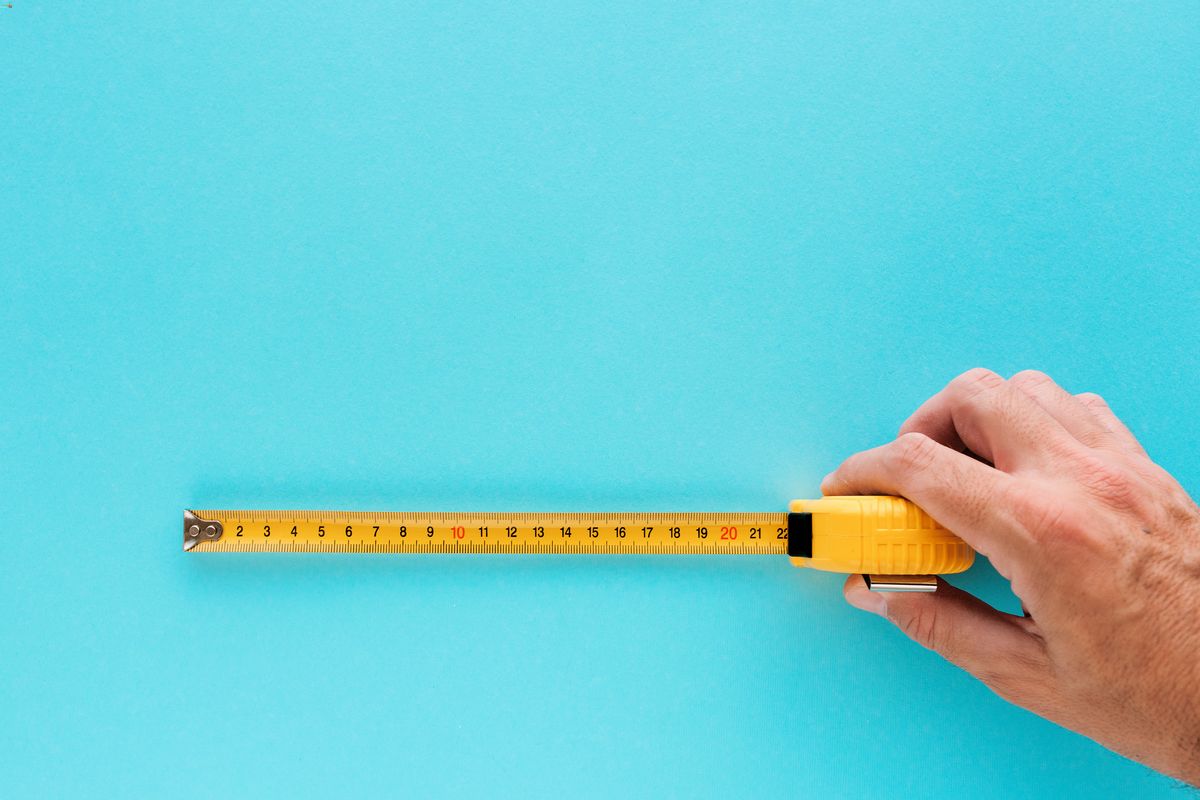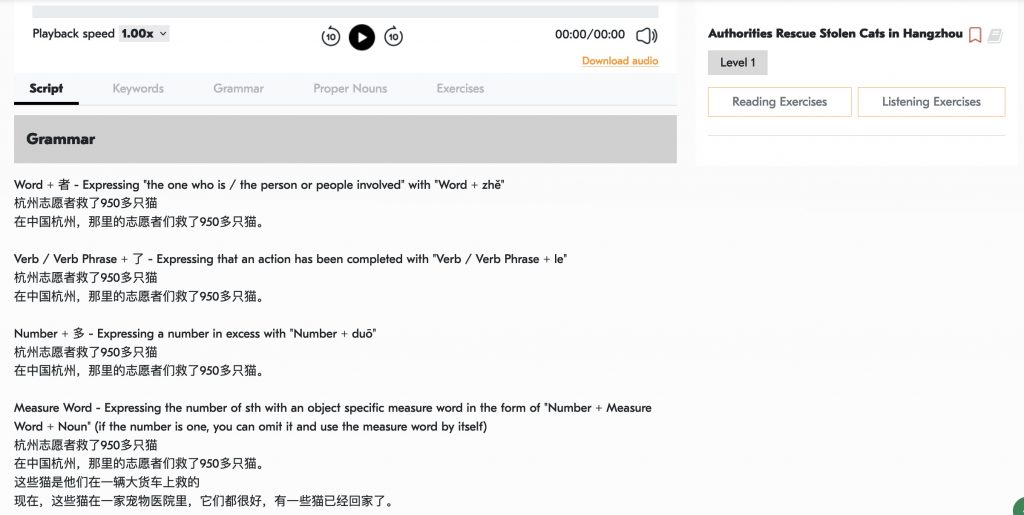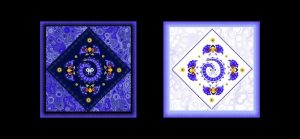
One of the big advantages of learning Chinese is that Chinese grammar is relatively simple. There are no verb conjugations, no genders, no cases, and the word order is straightforward. However, there is one aspect of Chinese grammar that often puzzles learners, those tricky Chinese measure words, also known as Chinese counter words or Chinese classifiers. This article will attempt to demystify Chinese measure words, provide you with a convenient list of the most common ones to learn, and give you some tips on how to learn them.
Firstly, what are measure words? Measure words work in tandem with numerals and nouns to express quantities. They are most common in Asian languages like Chinese and Japanese, but can also be found in European languages, including English. In English, we use measure words in combination with a certain kind of noun called an uncountable noun. Uncountable nouns generally are nouns that don’t have plurals, for example “bread”. In English, we can’t say “I’d like two breads, please”, instead we use a measure word instead, “I’d like two loaves of bread”, where “loaf/loaves” serves as the measure word.
The big difference between Chinese and European languages is that in Chinese a measure word is almost always used with a noun. So in English, we say. “I have three dogs”, but in Chinese, they will also add a measure word (只), 我有三只狗. (Wǒ yǒusān zhī gǒu).
The Most Common Chinese Measure Words
There are different answers on how many Chinese measure words there are, because of the different definitions of a measure word. Without getting into all the grammatical intricacies of Chinese measure words, some claim there are as many as 900 Chinese counter words while others believe there are as little as just over 100. Even learning 100 counter words might seem intimidating to learners, so it makes sense to concentrate on the most common ones first.
One of the main sources for determining the frequency of word usage in Chinese is China’s Hanyu Shuiping Kaoshi (HSK) or Chinese Proficiency Test. The HSK aims to measure Mandarin learners’ language proficiency. The recent revamp of the HSK system now introduces 300 characters at each level and in most cases, but not always, they are introduced by frequency of use. Completing HSK3, for example, means recognizing 900 characters and reaching a Lower Intermediate level.
In the first three HSK levels (new system), 28 Chinese measure words are introduced.
Chinese Measure words at HSK1-3 Levels
| Character | Pinyin | English definition | HSK Level |
| 个 | gè | All-purpose measure word | 1 |
| 块 | kuài | classifier for pieces of cloth, cake, soap, etc; classifier for money and currency units | 1 |
| 岁 | suì | classifier for years (of age) | 1 |
| 本 | běn | classifier for books, periodicals, files, etc | 1 |
| 次 | cì | classifier for enumerated events: time | 1 |
| 件 | jiàn | classifier for events, things, clothes, etc | 1 |
| 口 | kǒu | classifier for things with mouths (people, domestic animals, cannons, wells, etc); classifier for bites or mouthfuls | 1 |
| 条 | tiáo | classifier for long thin things (ribbon, river, road, trousers, etc) | 2 |
| 位 | wèi | classifier for people (polite), positions, places, seats | 2 |
| 层 | céng | classifier for floors (of a building), layers | 2 |
| 只 | zhī | classifier for birds and certain animals, one of a pair, some utensils, vessels, etc | 2 |
| 辆 | liàng | classifier for vehicles | 2 |
| 节 | jié | classifier for segments, eg lessons, verses | 2 |
| 份 | fèn | classifier for gifts, newspapers, magazines, papers, reports, contracts, etc | 2 |
| 段 | duàn | classifier for stories, periods of time, lengths of thread, etc | 2 |
| 碗 | wǎn | measure word for bowls of something | 2 |
| 场 | cháng / chǎng | classifier for events and happenings / classifier for sporting or recreational activities | 2 |
| 份 | fèn | classifier for gifts, newspapers, magazines, papers, reports, contracts, etc | 2 |
| 篇 | piān | classifier for written items: chapter, article | 2 |
| 座 | zuò | classifier for buildings, mountains and similar immovable objects | 2 |
| 封 | fēng | classifier for sealed objects, esp. letters | 2 |
| 所 | suǒ | classifier for houses, small buildings, institutions, etc | 3 |
| 种 | zhǒng | classifier for types, kinds, sorts | 3 |
| 把 | bǎ | classifier for objects with handle; classifier for small objects: | 3 |
| 张 | zhāng | classifier for flat objects, sheet | 3 |
| 台 | tái | classifier for computers, machines, some vehicles | 3 |
| 支 | zhī | classifier for rods such as pens and guns, for army divisions and for songs or compositions | 3 |
| 双 | shuāng | measure word for pairs of things | 3 |
Definitions from MandarinSpot online dictionary
The above 28 measure words, as well as being essential for acing your HSK3 exam, also provide a solid foundation for learners to start using in conversations.
And if you can learn 28 Chinese measure words, then learning 32 is certainly not out of the question. There are just an additional four measure words introduced at the HSK4 level that will take your Chinese to an even higher level.
Chinese Measure words at HSK4 Level
| Character | Pinyin | English definition | HSK Level |
| 盘 | pán | classifier for food: dish, helping / classifier for coils of wire / classifier for games of chess | 4 |
| 棵 | kē | classifier for trees, large plants, etc | 4 |
| 趟 | tàng | classifier for times, round trips, or rows | 4 |
| 批 | pī | classifier for batches, lots | 4 |
The HSK lists are useful because they aim to classify the words and characters that students learning Chinese are most likely to come across. The problem with the HSK list is that it is compiled by an official Chinese government organisation and is dominated by words and characters you are likely to come across in the textbooks printed by Chinese Government-owned publishing houses for Chinese learners. Additionally, HSK frequency lists are more focused on written texts, which can be markedly different from the vocabulary used in casual spoken Chinese, including the use of measure words. For example, often when speaking many Chinese replace the “correct” measure word with the all-purpose 个.
To capture a more realistic snapshot of common Chinese usage, alternative projects have emerged. In 2010, researchers Qing Cai and Marc Brysbaert embarked on one such project named SUBTLEX-CH. They analysed thousands of film and TV subtitles, believing this approach would offer a better understanding of the most commonly used words and characters in daily language. More details on the research project can be found here.
We’ve gone through the massive bank of data the SUBTLEX-CH researchers compiled and, for your convenience, identified the 20 most frequent Chinese measure words (you’re welcome!)
SUBTLEX-CH: Chinese Measure Word Frequency in Chinese TV and Film Subtitles
| Character | Pinyin | English definition | No. of appearances |
| 个 | gè | All-purpose measure word | 173,897 |
| 次 | cì | classifier for enumerated events: time | 43,823 |
| 件 | jiàn | classifier for events, things, clothes, etc | 19,567 |
| 位 | wèi | classifier for people (polite), positions, places, seats | 16,326 |
| 种 | zhǒng | classifier for types, kinds, sorts | 15,020 |
| 条 | tiáo | classifier for long thin things (ribbon, river, road, trousers, etc) | 12,508 |
| 岁 | suì | classifier for years (of age) | 11,556 |
| 场 | cháng / chǎng | classifier for events and happenings / classifier for sporting or recreational activities | 10,633 |
| 份 | fèn | classifier for gifts, newspapers, magazines, papers, reports, contracts, etc | 10,154 |
| 张 | zhāng | classifier for flat objects, sheet | 10,082 |
| 号 | hào | classifier used to indicate number of people | 10,054 |
| 名 | míng | classifier for people | 9,585 |
| 块 | kuài | classifier for pieces of cloth, cake, soap etc; classifier for money and currency units | 9,300 |
| 家 | jiā | classifier for families or businesses | 9,267 |
| 只 | zhī | classifier for birds and certain animals, one of a pair, some utensils, vessels, etc | 8,251 |
| 段 | duàn | classifier for stories, periods of time, lengths of thread, etc | 6,366 |
| 辆 | liàng | classifier for vehicles | 6,190 |
| 句 | jù | classifier for phrases or lines of verse | 5,981 |
| 起 | qǐ | classifier for occurrences or unpredictable events, eg case, instance; classifier for groups | 5,086 |
| 杯 | bēi * | classifier for certain containers of liquids, eg glass, cup | 4,886 |
Why You Should Learn Chinese Measure Words
Chinese measure words may appear daunting to European language speakers, leading some learners to skip them altogether. Although there are situations where Chinese doesn’t require a measure word, generally it is not only poor grammar to omit the measure word, it can even sometimes cause confusion for native speakers. For example, the correct way to say “three months” is 三个月, but if you leave out the measure word, 个, the meaning then becomes “March”. Or there’s the well-known example of the sentence 给他一把刀 “Give him a knife”. Leave out the measure word (把) and to native speakers, the meaning sounds more like “give him a stab (of the knife)”!
Many learners opt for an easier route and stick to the generic measure word, 个, all the time. In fact, Chinese speakers do this themselves in the rapid flow of daily conversations, if they don’t know the Chinese counter word or it doesn’t immediately come to mind. However, if you do it all the time, even though you will almost always be understood, it will still sound odd to a native speaker’s ears. It would be a bit like using the wrong measure word in English, like asking for a “piece of bread” instead of a “loaf of bread.”
As your Chinese language skills advance, mastering the correct measure words becomes even more important. If you are speaking or writing fluently, and using an extensive range of vocabulary, but rely solely on 个 in every situation, it can sound out of place. This basic error stands out and doesn’t align with your proficiency in other language areas.
Finally, some nouns have more than one measure word associated with them and using them correctly can add nuance or precision to the meaning, or even change the meaning entirely. For example, note how the meaning of the word 课 changes when you use three different measure words:
| 一节课 | a class |
| 一堂课 | a lesson |
| 一门课 | a course |
How to Learn the Chinese Measure Words
If you are just starting out learning Chinese, it’s a smart move to start learning the measure words from the beginning. This way helps you establish good habits, namely associating a noun with its correct measure word. But even if you have been learning Chinese for a while and have always avoided learning measure words, it’s never too late to start. Here are a few tips to guide you.
- Focus on the Basics. Learn the most common ones, and learn what they are generally used to measure. While some associations are random, there are also patterns. For instance, there are Chinese measure words for “long, thin things”, measure words for “things with handles”, etc. Knowing that 座 (“zuò”) is the measure word used for “mountains, buildings, and other immovable objects” allows you to make educated guesses when encountering new nouns.
- Pair Nouns with Measure Words. When learning new nouns, learn the corresponding Chinese counter word at the same time. If you like using flashcards or vocabulary lists, then include the counter word on the card or list.
- Consult Grammar Resources. As well as learning individual measure words, find grammar resources that offer a broader explanation of measure words and the rules governing them. For example, you need to be aware of the instances where measure words are not required, such as with some common time words like day (天), year (年), and second (秒).
- Focus During Practice. During your reading or listening practice, give the session a focus on measure words. Pay attention to the nouns and which measure words are used with them.
- Utilise Context-Based Learning. Make use of context-based learning with The Chairman’s Bao! The Chairman’s Bao lessons provide comprehensive explanations for grammar points – such as measure words – that you come across in the news item. Lessons are also accompanied by exercises to test your understanding, making the learning process more engaging and effective.

Conclusion
If you want to advance in your Chinese, understanding Chinese measure words is a key element that should not be overlooked. Focusing on the most common measure words is the key to building a strong foundation, and getting them right matters, as omitting measure words can lead to misunderstandings.
Employ some of the tips we’ve suggested above, and using essential Chinese counter words will make your Chinese conversations clearer and more accurate.
Author
Nick Dennis

Nick is an English teacher who has taught English as a Foreign Language in China, Italy and France. He has a Bachelor of Arts (Modern Languages), majoring in French, from the University of New South Wales. He loves travel, reading and football and, of course, learning languages. Four years ago, Nick and his wife co-founded an online English language school targeted at the Chinese market (since sold to Chinese investors). He has also ghost-written the autobiography of a well-known Australian horse trainer.
























